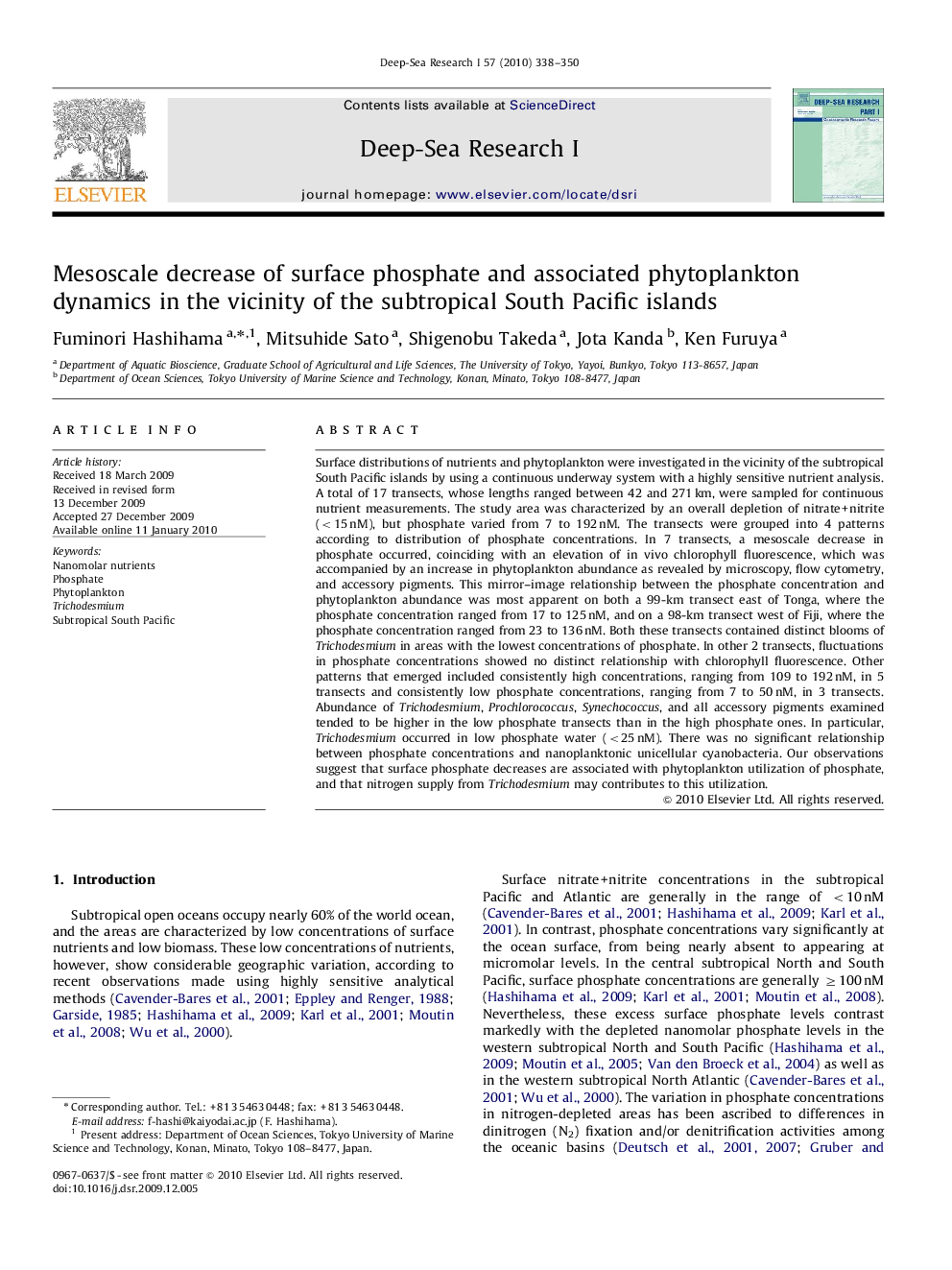| Article ID | Journal | Published Year | Pages | File Type |
|---|---|---|---|---|
| 4535378 | Deep Sea Research Part I: Oceanographic Research Papers | 2010 | 13 Pages |
Surface distributions of nutrients and phytoplankton were investigated in the vicinity of the subtropical South Pacific islands by using a continuous underway system with a highly sensitive nutrient analysis. A total of 17 transects, whose lengths ranged between 42 and 271 km, were sampled for continuous nutrient measurements. The study area was characterized by an overall depletion of nitrate+nitrite (<15 nM), but phosphate varied from 7 to 192 nM. The transects were grouped into 4 patterns according to distribution of phosphate concentrations. In 7 transects, a mesoscale decrease in phosphate occurred, coinciding with an elevation of in vivo chlorophyll fluorescence, which was accompanied by an increase in phytoplankton abundance as revealed by microscopy, flow cytometry, and accessory pigments. This mirror–image relationship between the phosphate concentration and phytoplankton abundance was most apparent on both a 99-km transect east of Tonga, where the phosphate concentration ranged from 17 to 125 nM, and on a 98-km transect west of Fiji, where the phosphate concentration ranged from 23 to 136 nM. Both these transects contained distinct blooms of Trichodesmium in areas with the lowest concentrations of phosphate. In other 2 transects, fluctuations in phosphate concentrations showed no distinct relationship with chlorophyll fluorescence. Other patterns that emerged included consistently high concentrations, ranging from 109 to 192 nM, in 5 transects and consistently low phosphate concentrations, ranging from 7 to 50 nM, in 3 transects. Abundance of Trichodesmium, Prochlorococcus, Synechococcus, and all accessory pigments examined tended to be higher in the low phosphate transects than in the high phosphate ones. In particular, Trichodesmium occurred in low phosphate water (<25 nM). There was no significant relationship between phosphate concentrations and nanoplanktonic unicellular cyanobacteria. Our observations suggest that surface phosphate decreases are associated with phytoplankton utilization of phosphate, and that nitrogen supply from Trichodesmium may contributes to this utilization.
